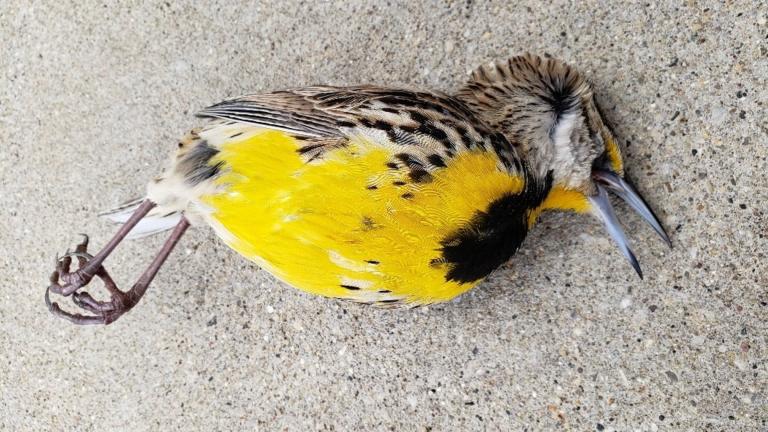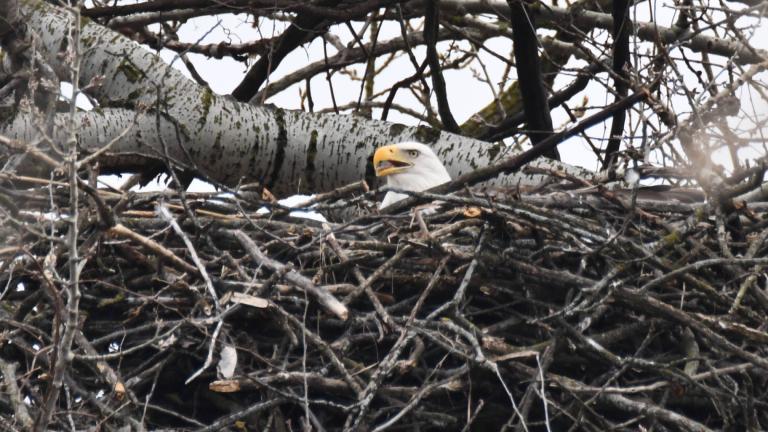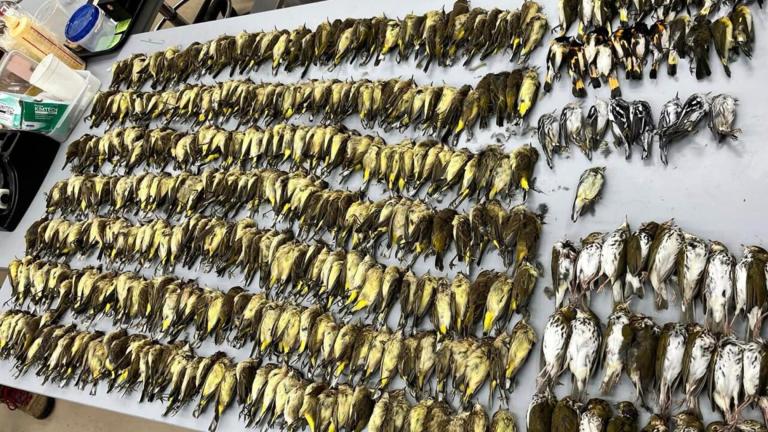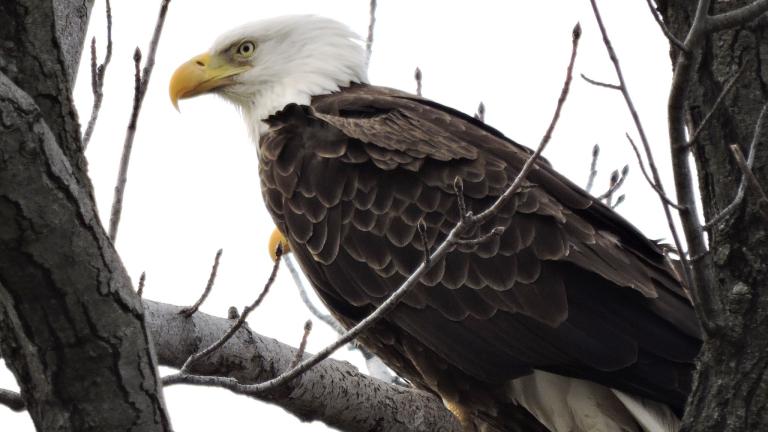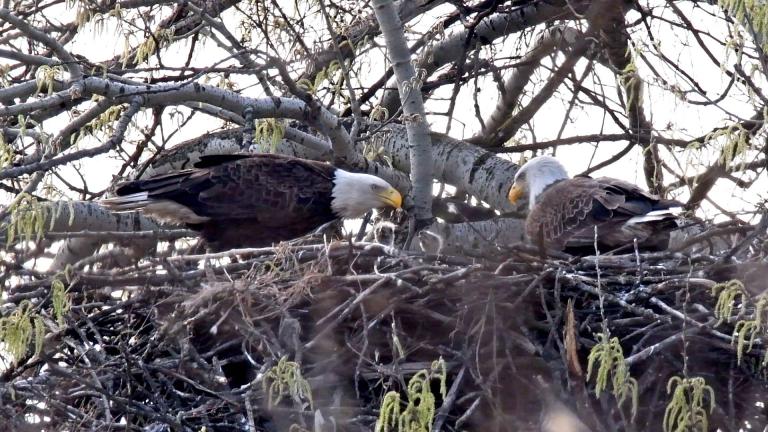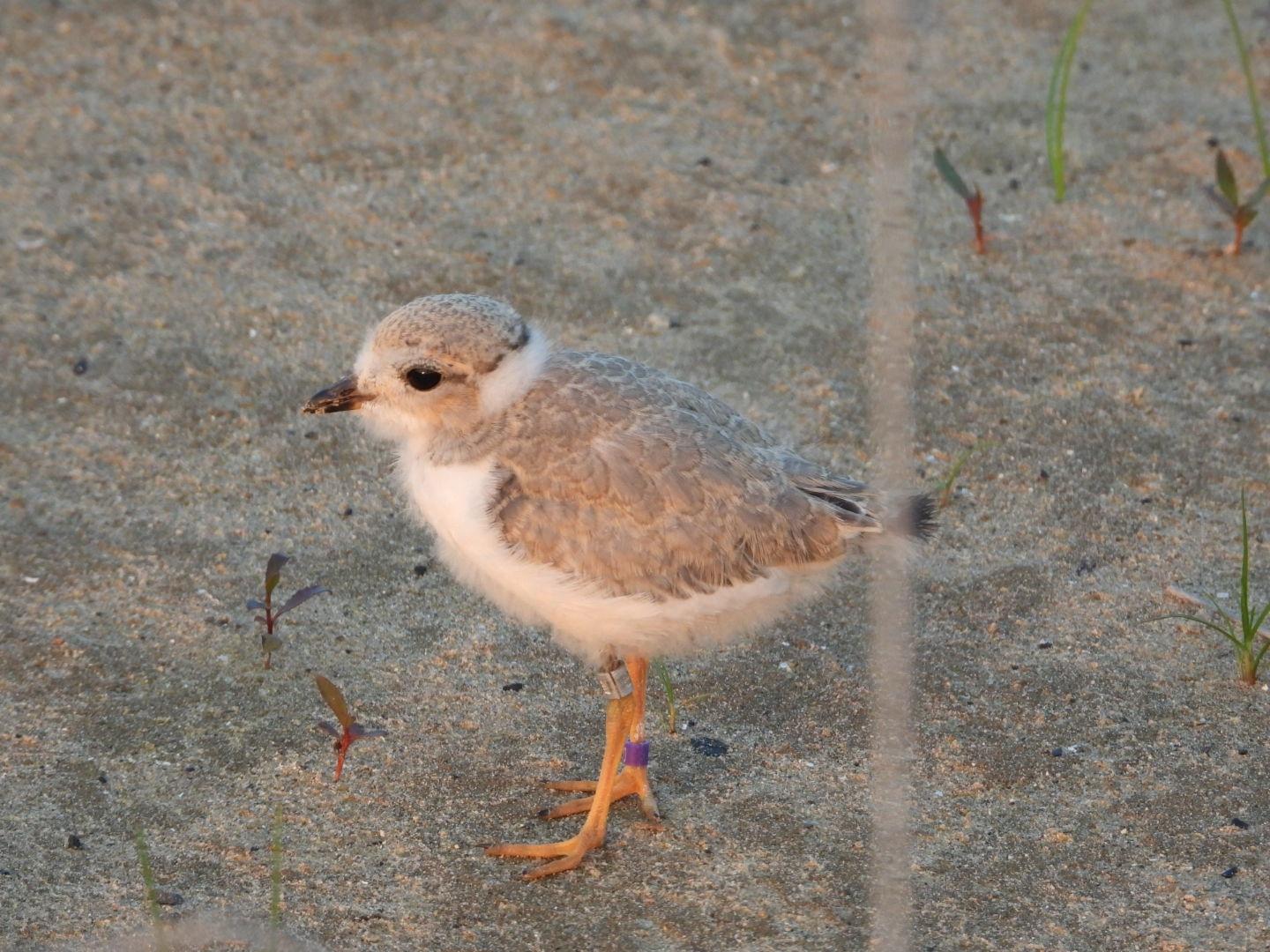 Meet Imani, which means faith in Swahili. (Courtesy of Judy Cheske)
Meet Imani, which means faith in Swahili. (Courtesy of Judy Cheske)
The newest members of Chicago’s growing piping plover family have names. Meet Siewka (pronounced Shivka), which is the Polish word for “plover,” and Imani, the word for “faith” in Swahili.
The names were submitted by Chicagoans, with the criteria that they reflect the culture, heritage and diversity of the city, and were selected by a committee. After the year the chicks’ parents Monty and Rose experienced in 2021, it wouldn’t have been surprising if Persistence and Resilience were the chosen monikers.
The couple made not one but two nests, losing their first clutch of four eggs to a skunk. Rose promptly laid a second clutch of four, three of which hatched naturally in early July but the last — who we now know as Siewka — needed an assist from staff at Lincoln Park Zoo.
As recently as last week, all four chicks were healthy and accounted for and given ID bands to track them as they migrate. By the time of last Friday’s naming ceremony, two of the chicks had gone missing, presumably lost to predators, according to monitors. For context, the average piping plover nest success rate in the Great Lakes is 1.3 chicks per nest.
Despite the disappointment, plover monitors remained focused on the overwhelming success of Monty and Rose, who continue to defy the odds. The couple is one of only 70 breeding pairs of endangered plovers found on Great Lakes beaches. That number was once down to less than 20 pairs that were only found in Michigan.
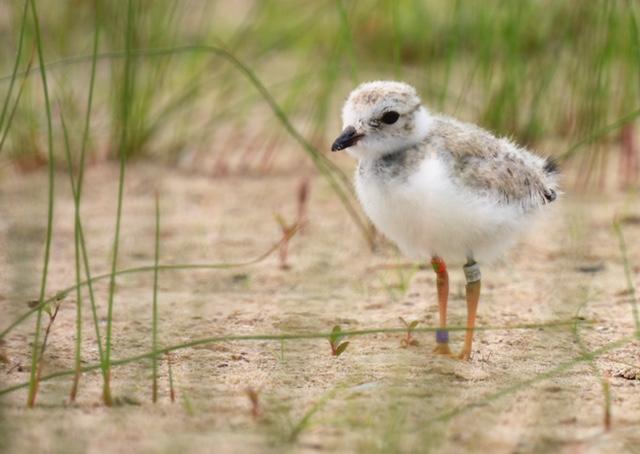 Here's Siewka. (Courtesy of Anne Gunkel)
Here's Siewka. (Courtesy of Anne Gunkel)
The Great Lakes Piping Plover banding team has banded 148 chicks so far in 2021 across the lakes, including in New York and Pennsylvania.
The newcomers include four hatched by one of Monty and Rose’s 2020 chicks, Nish. Nish and his partner Nellie became the first piping plovers to nest in Ohio in more than 80 years. Their remarkable success in rearing four chicks is a tribute to the plovers’ parenting instincts as well as the dedication of a team of monitors, who borrowed from the playbook developed in Chicago.
The monitors’ work is coming to a close, as the plovers prepare to fly the coop and head south, likely either to Florida or Texas. Female adults leave first, followed by the male, then the chicks. Monitors thought Rose was already long gone, but she was seen at Montrose beach over the weekend, joining Monty and the chicks.
The Ohio branch of the family is a bit ahead of Chicago’s, with Nish reportedly having just departed the nesting site and the chicks already capable of sustained flights.
Observers will be keeping an eye out for the plovers’ telltale bands to confirm their arrival at wintering sites. The watch will then be on again next spring for Monty and Rose’s return.
Contact Patty Wetli: @pattywetli | (773) 509-5623 | [email protected]

